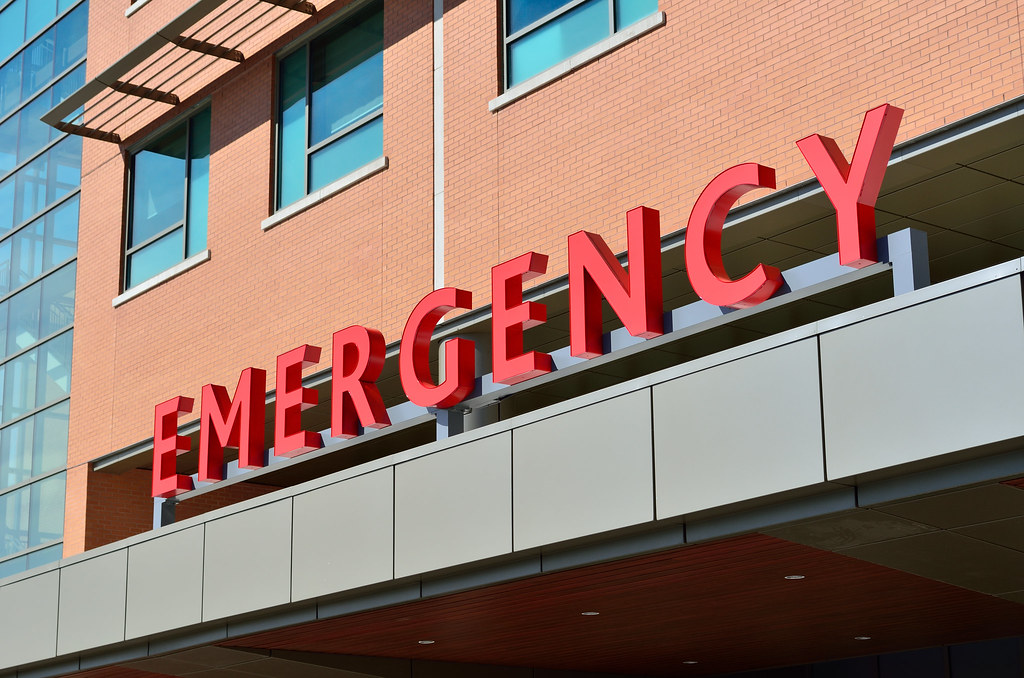Recent research shows that benzodiazepines are responsible for a high number of emergency department (ED) visits across the United States – being implicated for 9.9% of all ED visits involving adverse medication-related events. Additionally, the majority, or seven out of eight, of ED visits related to benzodiazepine use involve nonmedical use and self-harm. Furthermore, 80% of benzodiazepine-related ED visits involve the simultaneous use of other drugs such as alcohol. These findings suggest that the prescription of benzodiazepines by healthcare professionals should be limited, if not avoided altogether.
Medscape Medical News, quoting Daniel S. Budnitz, MD, MPD, director of the Medication Safety Program, Centers for Disease Control and Prevention (CDC), in communication with Medscape Medical News, reports:
“Although benzodiazepines are typically not problematic in terms of acute overdoses when used alone, patients often don’t take them as prescribed or use them with other substances in a self-harm attempt.”

Benzodiazepines, such as Xanax, are used to treat symptoms such as anxiety, insomnia, and seizures. However, they have a number of negative potential side effects, such as increasing the risk of physical dependence, being highly addictive, and causing severe respiratory depression when used in conjunction with other central nervous system depressants like alcohol or opioids. They have been shown to increase cognitive impairment, falls, and fractures, in elderly adults. Elsewhere, benzodiazepines have been shown to cause risk for dementia to more than triple.
Researchers examined data from the National Electronic Injury Surveillance System-Cooperative Adverse Drug Event Surveillance (NEISS-CADES) project, which is a “collaboration between the CDC, US Consumer Product Safety Commission, and the Food and Drug Administration” writes Medscape Medical News. The sample includes 60 hospitals that comprise a demographic that is nationally representative.
Researchers examined intent of patients’ benzodiazepine use, by looking at whether the use was therapeutic, related to self-harm, or nonmedical, with nonmedical reflecting use for recreational purposes or using someone else’s medication to self-treat anxiety. Most ED visits relating to adverse events associated with benzodiazepine use involved self-harm (30.4%) or nonmedical use (55.9%).
The authors of the study suggest that better screening tools are necessary to identify patient risk for self-harm, advocating in particular for a free resource developed by the National Institute of Mental Health, the Ask Suicide-Screening Questions (ASQ), which is used to assess youth suicide risk. As reported in Medscape Medical News, the authors found that more than half, or 53.8%, of visits involving nonmedical benzodiazepine use included patients who were 15-34 years old, making this age group particularly vulnerable.
They also express concern about benzodiazepine exposure for both older and younger adults. Despite benzodiazepine use being discouraged by the American Geriatric Society due to negative effects, ED visits attributed to benzodiazepines for adults 65 and older total over 16,000 per year. On the other end of the lifespan, almost 2,500 ED visits examined in the study involved children younger than 5 who had accidentally ingested benzodiazepines. The researchers promote the safe storage of medication as a preventative measure.
Moreover, as 20% of ED visits involving benzodiazepines included concurrent use of other drugs, such as opioids (29.9%), the researchers urge clinicians to ask their patients about substance use when prescribing benzodiazepines. They suggest steps such as urine testing, if opioid or cocaine use is suspected, and encourage clinicians to refer their patients to substance abuse treatment if needed. Furthermore, the authors promote psychiatric and social assessments and follow-up for patients who are at risk for self-harm. They offer mental health assessment and treatment as options for patients who engage in nonmedical benzodiazepine use, to address underlying issues that may be contributing to their drug use.
Authors Vega and Maust, as reported by Medscape Medical News, encourage healthcare providers to limit benzodiazepine use across the board, and especially with high-risk patients, such as those with a history of substance misuse or self-harm behavior. They suggest that clinicians gain a better understanding of patients who engage in nonmedical benzodiazepine use, as well as the negative events that come along with this use. They point to the potential harm that has been shown to be caused by benzodiazepines and urge caution when prescribing. Elsewhere, others have urged against the prescription of benzodiazepines at all, citing disastrous individual and societal side effects.
****
Anderson, P. (2020). Benzodiazepines implicated in high rate of ED visits across US. Medscape. (Link)















Such a study would be of little use in my State where the ‘spiking’ of citizens is being authorised by the State, and then concealed with fraudulent documents.
“Researchers examined intent of patients’ benzodiazepine use”
How could these researchers consider my intent when I ingested these drugs without my knowledge? Maybe they could consider the intent of the people who arranged the ‘spiking’? Kidnapping? No, we don’t like that story so here’s one we prepared in the FOI office earlier.
And where on the database would the ‘cover up’ show up? So working with a whole bunch of false data is going to give some biased results. This is the problems with this type of medical fraud, people can go on being hurt for years without anyone other than those doing the cover ups knowing what is actually occurring.
On one hand we have the government passing laws regarding the tampering with food and on the other they’re enabling the conduct because it makes it easy for public officers to obtain ‘confessions’ from people who have been ‘spiked’ with intoxicating/stupefying drugs. Go figure.
Report comment
It’s curious to me that MIA published this article. The diction and tone sound a lot like the neo-medieval medi-babble put out by the CDC and Pharma that relentlessly tries to punish and prosecute doctors who use older, and safer, medications and interventions instead of newer, and far more dangerous drugs and treatments.
The weasel words in this puff piece might be appropriate for a social media post or a fashion magazine, but this kind of writing has no place in any kind of discourse concerning public health. Just because many other writers are using the same deceptive language does not make it okay.
One of many examples would be the phrase “involving adverse medication-related events” — this is a vague and meaningless data point. Words like “involving” and “related” do not even speculate about cause, and “events” could cover almost anything. Forgive my for being cynical, but my first guess is that the language is deliberately ambiguous in order to generate a bigger percentage of patients admitted to the ER, and to make benzodiazepenes look really, really bad. “Involving adverse medicated-related events” could cover, basically, anything bad that happened in the ER when someone was taking benzos, whether or not the benzos caused it. If someone had a heart attack in the ER because they had a bad reaction to clonidine or Metformin, and they had a prescription for benzos, that would probably be counted even though the benzos had nothing to do with the “event.”
This article has one, and only one, useful statistic: “ED visits attributed to benzodiazepines for adults 65 and older total over 16,000 per year.” We don’t know what year we’re talking about… but that has gotta be a TINY number, right?
Let’s assume 2017, when there were 139,000,000 ED visits in the US (https://www.cdc.gov/nchs/fastats/emergency-department.htm). That would mean that .01% of ED visits are attributed to benzodiazepines for adults 65 and older. I wonder what other drugs could claim such an outstanding safety record, huh? Probably not many– and that’s exactly what many older prescribers will tell you. Sure, they can be really dangerous for some patients, and the risk of having problems with these drugs is very high for these populations– particularly for people who drink, AT ALL, or who also use illicit opiates.
But despite the substantial risks of dependence and overdose, WHEN USED AS DIRECTED AND CAREFULLY MONITORED (which is far easier and more practical now now due to PMPs) benzodiazepenes are FAR SAFER than almost any other class of psychiatric medications.
This article doesn’t sound like science to me. It sounds like just another talking point from the vested interests who are bringing back ECT, and pushing quack treatments like TMS and Spravato. I guess it’s a lot easier to shill for the new, and more dangerous neurotoxins once you’ve outlawed all the older and safer ones.
Report comment
Thanks for keeping the light on for the public!
Urine samples may not be an initial stopper. It starts with one prescription. The first drug experience is what drives the street use.
The reality of the situation ends at the morgue. Users can’t see it.
Report comment